Last updated on August 13th, 2016
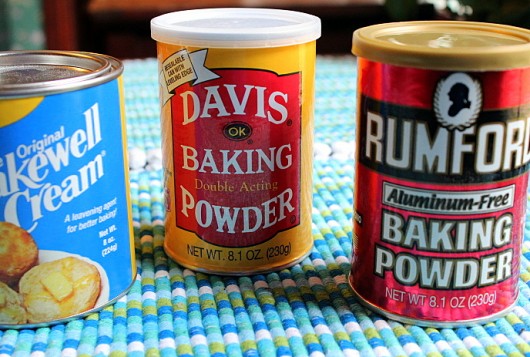 Ever wondered about the difference between baking soda and baking powder? I certainly have. I’ve also wondered why some recipes request just one of these ingredients, while others require both. And now, thanks to the experts at Google University, I finally have some answers.
Ever wondered about the difference between baking soda and baking powder? I certainly have. I’ve also wondered why some recipes request just one of these ingredients, while others require both. And now, thanks to the experts at Google University, I finally have some answers.
First, let’s conduct a fun experiment!
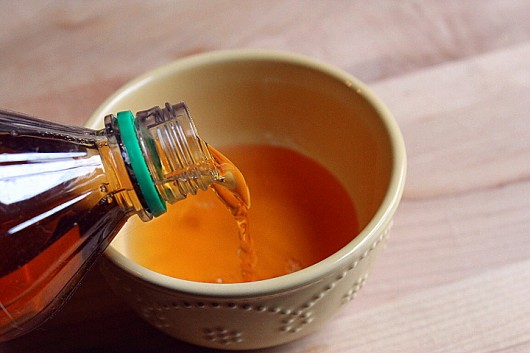 Tip 1/4 cup vinegar into a small bowl.
Tip 1/4 cup vinegar into a small bowl.
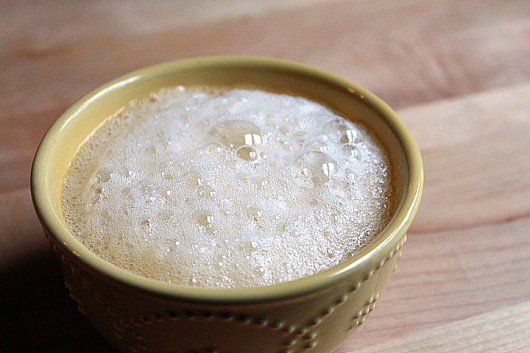 And jump back! The mixture will bubble furiously as the alkaline ingredient (baking soda) neutralizes the acidic ingredient (vinegar). This is the chemical reaction that causes pancakes, muffins, biscuits, and other quick breads to rise. Unfortunately, the bubbles never last for more than a few minutes. And that’s why baking powder was invented.
And jump back! The mixture will bubble furiously as the alkaline ingredient (baking soda) neutralizes the acidic ingredient (vinegar). This is the chemical reaction that causes pancakes, muffins, biscuits, and other quick breads to rise. Unfortunately, the bubbles never last for more than a few minutes. And that’s why baking powder was invented.
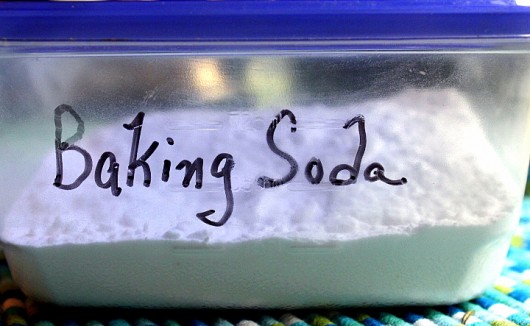 Baking Soda, or sodium bicarbonate, is pure alkaline. It relies on vinegar, lemon juice, buttermilk, chocolate, or some other acidic ingredient to become foamy, or “active.” The foaming action is fast but brief, so batters and doughs leavened exclusively with baking soda must be baked immediately after mixing.
Baking Soda, or sodium bicarbonate, is pure alkaline. It relies on vinegar, lemon juice, buttermilk, chocolate, or some other acidic ingredient to become foamy, or “active.” The foaming action is fast but brief, so batters and doughs leavened exclusively with baking soda must be baked immediately after mixing.
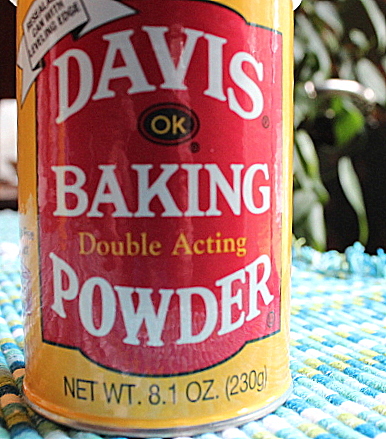 Baking Powder is a miracle blend of sodium bicarbonate, powdered acid, and some starch. The powdered acid is there to insure that foaming, or leavening, will occur even without other acidic elements in a recipe.
Baking Powder is a miracle blend of sodium bicarbonate, powdered acid, and some starch. The powdered acid is there to insure that foaming, or leavening, will occur even without other acidic elements in a recipe.
Today, almost all brands of baking powder are “double-acting,” meaning they leaven first on impact, and again during the heating stage. Thus we can mix our batters and doughs without having to rush them into the oven.
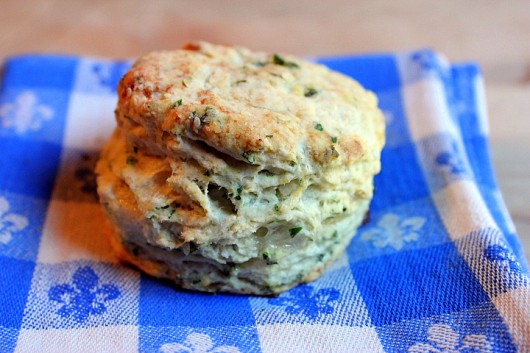 And what about recipes — including the Herbed Cottage Cheese Biscuits I made last week — that require both baking soda and baking powder? These baked goods might contain a certain acidic ingredient — cottage cheese, for instance — that requires additional alkaline for sufficient rise.
And what about recipes — including the Herbed Cottage Cheese Biscuits I made last week — that require both baking soda and baking powder? These baked goods might contain a certain acidic ingredient — cottage cheese, for instance — that requires additional alkaline for sufficient rise.
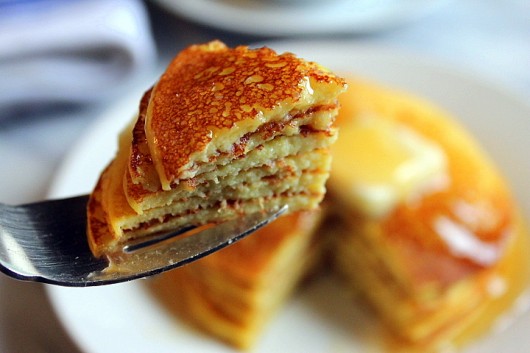 Leavening isn’t the only benefit of baking powder. It can affect the taste and color of foods, too. Enjoy the tangy flavor of buttermilk pancakes? Sodium bicarbonate can neutralize the acid in the milk, thereby rendering it flavorless. Since baking powder already contains its own acid, the tang of the buttermilk isn’t overly compromised.
Leavening isn’t the only benefit of baking powder. It can affect the taste and color of foods, too. Enjoy the tangy flavor of buttermilk pancakes? Sodium bicarbonate can neutralize the acid in the milk, thereby rendering it flavorless. Since baking powder already contains its own acid, the tang of the buttermilk isn’t overly compromised.
Quick breads which are highly-acidic will not color (brown) well during baking. But by adding just a little sodium bicarbonate to the mix, the breads will turn alkaline enough to darken on a sizzling skillet or in a hot oven.
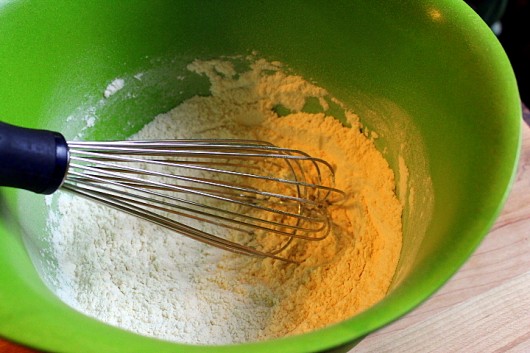 In any event, never over-mix any batter or dough that contains baking soda or baking powder. If you beat, stir, or knead too vigorously, you will press out all of the leavening bubbles. And without those bouncing bits of carbon dioxide, there will be no rise!
In any event, never over-mix any batter or dough that contains baking soda or baking powder. If you beat, stir, or knead too vigorously, you will press out all of the leavening bubbles. And without those bouncing bits of carbon dioxide, there will be no rise!
Now, I hope you learned something from this culinary class. If nothing else, just remember that NaHCO3 + KHC4H4O6 → KNaC4H4O6 + H2O + CO2.
Confession Time: Chemistry, when taught without emotion, or worse — without something to eat — always bores me to tears.
And speaking of eating…why not head into the kitchen and turn some bicarbonate of soda into something screamingly-delicious? Here are some of my favorite quick breads (click titles for recipes):
English Cream Scones
Low-Carb Cottage Cheese Pancakes
Whole Wheat Irish Soda Bread
Well. I hope you’ll scroll down and leave a comment. And if you haven’t already, kindly sign up for my email updates.
Love ya!
KLJ
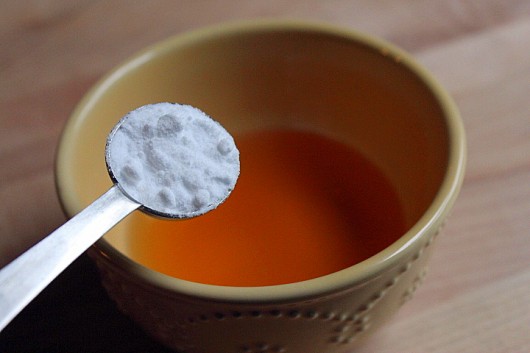

Annette Guilfoyle says
Love your blog….always great ideas thoughtfully presented.
Mary in Iowa says
I loved the chemistry lesson until you got to the algebraic formulas, which were my downfall in Chemistry class, circa 1960-61. 🙁
To address a less lofty subject, the suggested organic bathroom bowl cleaner is to pour in vinegar, walk away for a spell, then return and add baking soda and, yes, STAND BACK! I have a neighbor who swears by it. And preaches it like an evangelist.
myrtle miller says
You need your own cooking and gardening show. Have someone video you cooking and giving a tour of your garden and send it to LPB and while waiting for them to decide make a Christmas dvd and send it to Barnes and Nobles.
Cathy Haynes says
Thanks! I always wondered, but never took the time to look it up!
Jane Rutkowski says
Very informative. I never knew the difference. Baking soda mixed with water is also great for cleaning the inside of the refrigerator.
Shirley B. says
I agree with Myrtle.
I just love you, Kevin.
Beverly, zone 6, eastern PA says
FASCINATING !
I love science.
And baking.
And your blog.
xoxoxoxox
Katie Zack says
Thanks Kevin ! I especially like the suggested chemistry experiments!! I will hop to it!
Donna Korkus says
Thanks Kevin for the science lesson…I too wondered why sometimes you don’t always use both.
Hope you have a great fall day.
Donna Korkus
Heather says
Awesome!
Karen Thomas says
Now I understand why the cookies baked last are always flatter than the first baked! Glad to know!
Kris says
I always wondered about this. Thank you!
Peggy says
thanks, Kevin. Love the science behind this and reminder to not stir too much! You’re awesome as is your website 🙂
vera says
Thanks Kevin for explaining the difference and not to stir too much. Love your recipe!
Rita C. says
Hm! And now I know! TY! I’ve always wondered about that, too!
Debbie says
How about aluminum vs non-aluminum baking powder? Always wondered about that one, is there any benefit to using the one with aluminum since it sounds so sinister. 🙁
Thanks, Debbie
Joanna says
Spot on Kevin!
Thank you for the very scientifically correct and fun lesson – always enjoy learning from you!
Kathryn says
A chemistry lesson today! You are a marvel. Thanks for the education. I always wondered what the difference was. Now I understand.
Sherlie Magaret says
I did not know that baking soda enabled browning, learn something every day, thank you.
Samantha Gray says
Thanks for the clarification. This was very interesting. And I’m going to try to make that scrumptious looking pie!
Doris says
Thanks for the lesson. I learned something new today
Cary Bradley says
Thank you, thank you, thank you! I too have wondered about the scientific properties of these 2 and am grateful for your easy-to-understand explanation of them. Maybe if you’d been my piano teacher, I’d have practiced, and after 5 years of lessons, be able to play something! 🙂 You are a born teacher and fun soul to know. Thanks for the ride! 🙂
Julie R says
Thanks for the science lesson. I had always wondered about the differences between the two. Now you have me in the mood to bake. I like the tip about not over stirring. Great info, as always.
Trudi says
yes I DID wonder about this and I am SO GLAD you were smart enough or curious enough to find out and let us all have a better understanding ! THANKS!
Jeanne Meeks says
Always interesting. I did wonder about powder vs soda. Now I know. Thanks.
Suddenly, I’m hungry for scones. Why is that?
Carole Bryan says
Next Baking 101 please do yeast. Dry yeast, instant yeast, quick dry low-fat yeast, yada yada yada yeast…I’m ascared of them all
anita says
Hi Kevin,
Sorry if I’m posting this question in the wrong place, but I wasn’t quite sure where to post it. I didn’t think it quite fit in with “Ask Kevin” as it’s not about gardening or decorating.
You’ve often had stand mixers as giveaways. Could you comment on bowl-lift mixers vs tilt-head mixers? Any preference? I’ve read conflicting reviews and would appreciate your opinion.
Sandra from WA says
Hi Kevin,
I learn something new every week from your news letter. Always helpful and enjoyable.
Thanks,
Sandra
Carol MAIELLO says
Dear Kevin( feel like I know you)- I just LOVE your blog-and thanks so much for ALLL the fun and GREAT idees and recipes!!!
You are a TREASURE TROVE!!!!!
Can you freezes those “low carb” cottage cheese pancake after cooking them?
THANKYOU for day-brightening-happy, funny, positive recipes, and ALL the great stuff you share!!
Love-Carol
Nancy says
Now after 50 years, I understand why chemistry is relevant even if I don’t have a technical life. Thanks you so much. Why didn’t they tell us that in Chem 1 to get us interested.
JoAnne says
Always a lesson learned. Thanks.
susan says
Love reading your blog! Wish you were my next door neighbor. Your humor just lightens my day–and lately has kept me from getting my work done…but what a glorious afternoon it has been really digging in to past posts. Each one as delightful as the last. Am going to make creme fraiche tomorrow.
Sheri says
Brilliant!!!!!!!!!! ……..and “Thank You” for the enlightenment! Your the best!
C Wood says
Happy, healthy New Year to you and yours!
Kavita says
Such a simple lesson yet so profound for bakers !! Always wondered and thought I knew it all but learnt a brilliant lesson.
Thanks Kevin. There are a million blogs out there but yours I devour 🙂
Look forward to it everyday.
Donna says
New to your site. Totally delightful inside and outside the house. A new and devout friend
Kevin Lee Jacobs says
Hi Donna – Welcome aboard!
Pat C says
I love this kind of information. Our world, though it appears very chaotic, is actually very organized scientifically. I feel like such a nerd right now but I don’t care! LOL I enjoy your blog Kevin! Thank you.
Fran says
Hi Kevin, This was really helpful, Thanks! I’ve always wanted to know about Bicarb v’s Baking powder and why recipes with chocolate usually have bicarb soda in it.
We’ve just had a birthday celebration at my house in Greensborough Melbourne Australia for my Dad’s 82nd birthday. My Dad is German and he selected your recipe (Rustic Apple Cake ) to have as a German Apple Cake. I can tell you he and we enjoyed the cake immensely.
So, we are sitting here around my dining room table looking at your blog. I’ve just shown the family your funny recipe presentation (with photos and comments) and the excellent article about the Bicarb and Baking powder. Mum wants to know why Baking powder can make your teeth feel chalky. Do you know?
Thanks again Kevin! I’ll be following your blog.
Fran.
Susan says
Kevin…I love reading your recipes…not only because they all sound so delicious…but because you’re SOOOO flippin’ funny! I love you! I wish you lived in our house!
PS – Do you have any gluten free recipes that don’t taste blah?
Toni says
Kevin, one of the things I really love about your posts is the links throughout. Here I am learning about the difference between Baking Powder and Baking Soda (in plain English, I must add) and the next thing I know I smell Herbed Cottage Cheese Biscuits in my kitchen. So easy and handy. You are one of a kind, sir.
Lu says
I just had an ‘I didn’t know that’ moment. thanks for the explanation!
Seemal Ali says
Overall, this blog post successfully clarifies the differences between baking soda and baking powder, offering readers a solid foundation for successful baking adventures. Well done!